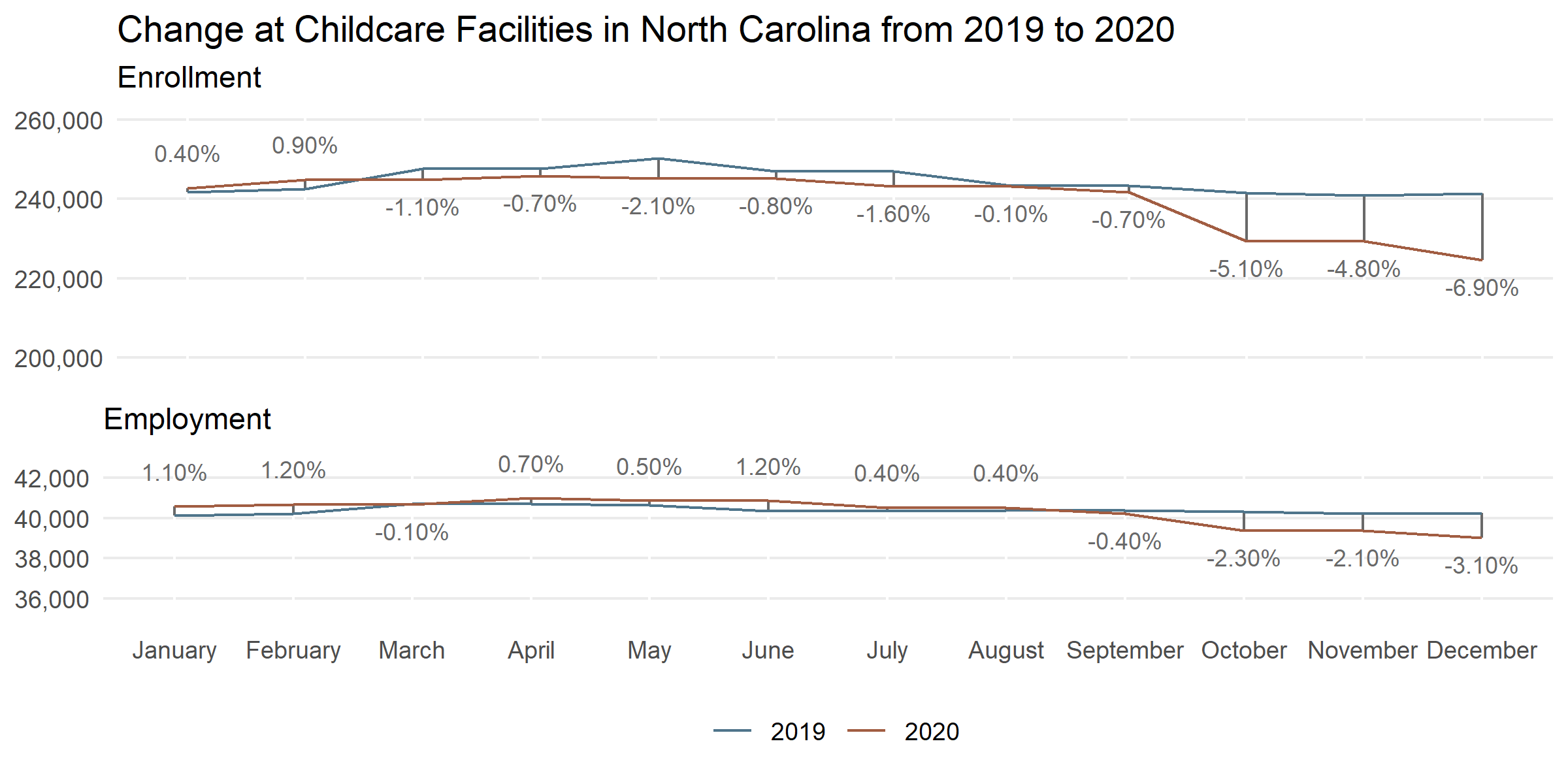By Kaitlin Heatwole | November 25, 2020
Monthly reports from North Carolina’s Department of Health and Human ServicesNCDHHS show that while childcare enrollment dipped slightly in spring 2020 compared to the year before, while a more drastic decline occurred in October of this year.
The childcare statistical detail report measures enrollment and maximum capacity at each licensed childcare facility in North Carolina. The modest decline we see in the spring and summer suggests that many families were paying to preserve their enrollment despite keeping children at home. This allowed for childcare facilities to maintain their staff, with employment at these facilities closely tracking 2019 levels.

This pattern changed in October, when childcare enrollment decreased by 5.1% and childcare facility employment decreased by 2.3%. The October drops are likely caused by the end of support to childcare facilities through the CARES Act, which expired on September 30.
Age and geography
By age, the October enrollment dip is most pronounced among 5-year-olds in preschool. However, this is concentrated in areas with moderate and low unemployment, where families may be choosing to delay enrollment. The delay is likely influenced the uncertainties faced by parents when confronted with in-person and remote learning options.

Gender, class and childcare
Across all ages, however, the enrollment decline is concentrated in areas with higher unemployment, where enrollment is down 10.5% from 2019. This rate—twice the overall state decline—suggests that families facing financial hardships are relinquishing childcare in the absence of external support, compounding the difficulties they face in recovering from unemployment. This compounds the gendered forms of vulnerability that can be found in multiple datasets examined by the Carolina Tracker team regarding domestic violence and unemployment. Policymakers need to directly confront the challenges faced by women across the state.
